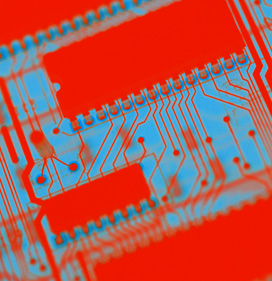An IT product firm is advocating the use of secure enterprise workspaces in BYOD (bring your own device) workplaces to help organisations balance employee expectations, business goals, IT requirements and security needs.
According to Dell, a plethora of options exist for providing employees with the software and other enterprise resources needed to do their jobs. A secure workspace, however, is the most effective approach for accommodating employees’ needs for anywhere, anytime access to corporate data and resources while also elevating data security and streamlining IT management.
Neal Foster, executive director, Mobility and Integrated Solutions, Dell Software, says: “For many organisations, a digital workspace is the simplest, as well as most secure and cost-effective, way to provide users with the flexibility they want while keeping data safe. By enabling employees to easily download and install everything they need to safely access corporate data, Dell can immediately reduce the burden on IT while enabling mobile workers to be more productive.”
With a secure workspace, organisations can the IT firm says provide a complete enterprise environment that isolates corporate data from the host environment of personally owned or corporate-owned smartphones, tablets and laptops.
Dell offers five reasons for including secure workspaces in any mobile/BYOD strategic plan:
Reason No.1: Fast, Easy, Anytime Access to Corporate Data
Productive employees expect seamless access to necessary software and enterprise resources from a variety of devices, regardless of who owns them. Secure workspaces enable IT to make that happen with:
· Fast, self-service installations and upgrades— In most cases, employees can download, install and configure workspaces with little or no help from IT.
· Employee privacy protection— By running secure workspaces on personally owned smartphones, tablets and laptops, employees have confidence they can use enterprise software without worrying that someone can alter their personal configurations or access personal data.
· Continued IT support— IT still manages enterprise apps, including configuration and updates, regardless of device type. IT doesn’t have access to apps or information on the personally owned device.
Reason No. 2: Responsive, Consistent User Experiences
Employees also demand responsive, consistent user experiences or they will seek workarounds to access much-needed software and tools. Fortunately, within a secure workspace, IT can provide a full range of required software and secure access to enterprise resources. Other benefits can be realised from:
· Strong application performance—Applications run locally within the workspace, providing excellent responsiveness; employees don’t have to learn multiple interfaces to access the same resources on multiple devices.
· Employee-controlled upgrades—Workspaces enable employees to move to new devices on their own schedules, as the same workspace can be installed on the new device.
· Offline productivity—Employees can remain productive and continue working, even with poor or no network connectivity; information is automatically synched when connectivity is restored.
Reason No.3: Secure, Compliant Data Access
IT can more easily keep enterprise information safe while the ability to set granular settings and access policies protects enterprise networks. Other reasons why secure workspaces boost security include:
· Tight security— Unless specifically allowed, employees can’t transfer data between the host environment and the workspace. All work within the workspace is encrypted, and some solutions enable identity access policies for increased protection.
· Remote patching— Remote patching and updating helps prevent security breaches by eliminating threat vectors, such as malware and malicious downloads that prey on outdated systems.
· Remote wiping— When a device is lost, an employee leaves or a contract ends, IT can remotely lock the workspace or wipe corporate data.
Reason No.4: Reduce IT Administrative Burdens
Secure workspaces are ideally suited for streamlining IT management as laptops are managed with a single golden desktop image of the enterprise environment, including OS, mobile access software and productivity applications. Other ways a secure workspace helps IT reduce administrative headaches include:
· Self-service capabilities—All required software is integrated and optimally configured as part of a corporate image (in the case of client systems) or a mobile app.
· Device independence—A single software environment and set of software applications means organisations offering BYOD or BYOPC don’t have to worry about supporting multiple device types.
Reason No.5: Lower IT Costs
While secure workspace solutions require some additional data center infrastructure, organisations can reduce the need—and cost—associated with supporting large hardware deployments.
· Less infrastructure requirements—Workspaces minimise the need to purchase, provision and maintain numerous new servers and storage systems.
· Lower capital expenditures—BYOD/BYOPC programs can be launched using personally owned devices, which decreases hardware costs for the organisation. A single device can separate engineering applications from corporate functions, eliminating the need for multiple systems for a single employee.
If an organisation implements a secure workspace, it will need to support the solution. Dell says that it has defined a number of best practices for supporting secure enterprise workspaces, including preparing employees to download and set up the solution, training help-desk staff on the range of issues users might encounter, and enabling IT administrators to configure the environment, manage updates, create a corporate image and respond to alerts.










